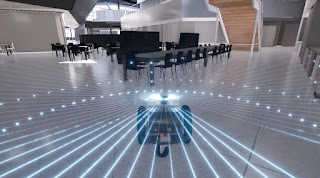Acronis Files Connect 10.7 includes a number of new features and enhancements aimed to make everyday workflows of both Mac users and Mac administrators easier and more productive, such as a new Mac client application and improved search capabilities.
NEW MAC CLIENT APPLICATION
Simplified file share location
A new Mac client application acts as a handy unified interface to quickly locate and access all file shares and DFS resources available on your network via both AFP and SMB.
The brand-new application enables users to bypass the process of individually working with file servers and mounting file shares, providing one simple window into all available resources.
Fast, powerful search capabilities
Use a new Mac menu bar tool or the Mac client application interface to perform nearly instant filename and full-content Spotlight searches.
Searches can target one, many, or all available file shares for enterprise-wide search.
Advanced search query parameters are available, including Windows and Mac file tags.
View and add available printers
Browse a list of all network printers hosted by Acronis Files Connect.
Quickly add printers to your Mac.
Spotlight search for SMB file shares
Put an end to painfully slow, filename only search of SMB file shares. Acronis Files Connect now supports search indexing of SMB file shares, providing fast full-content search for Mac users connecting to shares via SMB.
With the new Mac client, each file share volume added to an Acronis Files Connect server can be configured in two ways: as an AFP file share with Network Spotlight search, or in a mode, when Macs locate files and folders using the search capabilities of the client and then connect to the file server or NAS by using SMB.
SPOTLIGHT SEARCH IMPROVEMENTS
Real-time search index updates. Provide up-to-date search results when using Acronis Content Indexing with local and Network Reshare volumes. Acronis Files Connect continuously monitors for changes in file shares, even when indexing remote content on other file servers or NAS, enabling near real-time search results, even when using our Network Reshare feature.
File content indexing limits. Control the size of your search indexes with new Acronis Content Indexing, which provides the ability to limit file content indexing. Acronis Files Connect can be configured to only index the first few MB of each file on your server, reducing search index size dramatically when many large files are involved.
File indexing exclusion rules. Further control your search indexes by excluding a subset of folders or file types from Acronis Content Indexing. File exclusions can be configured on a per file share basis, allowing content that is not necessary for indexing to be omitted.
Intelligent handling of archived files. Acronis Content Indexing will detect and omit file system archiving 'stub' files from search indexing. This allows nearly instant Spotlight search to be enabled for a file share, even if it is being managed by an hierarchical storage management (HSM) / file-system archiving solution.
Integrated Windows Search controls. View the indexing status and issue a reindex command for a file share you've selected to index with Windows Search services, directly from the Acronis Files Connect admin console. File shares configured in Acronis Files Connect to use Windows Search will now be automatically configured for indexing, if they are not already being indexed. You'll no longer need to handle this separately.
Windows and Mac file tags search. Perform searches for files that have standard Windows or Mac file tags added to them. Acronis Files Connect now translates Windows tags so they can be viewed within a file's 'Get Info' details on the Mac.
DFS CONNECT IS NOW INCLUDED IN THE BASE LICENSE
The "DFS Connect" features, which were previously available as an add-on to perpetual Acronis Files Connect licenses, are now included in the base product license. All versions of Acronis Files Connect will allow publishing your DFS namespace to Mac users via the new Mac client application. Select whether Mac users connect to each target server in the namespace via AFP or SMB. This allows flexibility in where you install Acronis Files Connect.
For additional information, please visit https://www.acronis.com/en-us/mobility/mac-windows-compatibility/

























